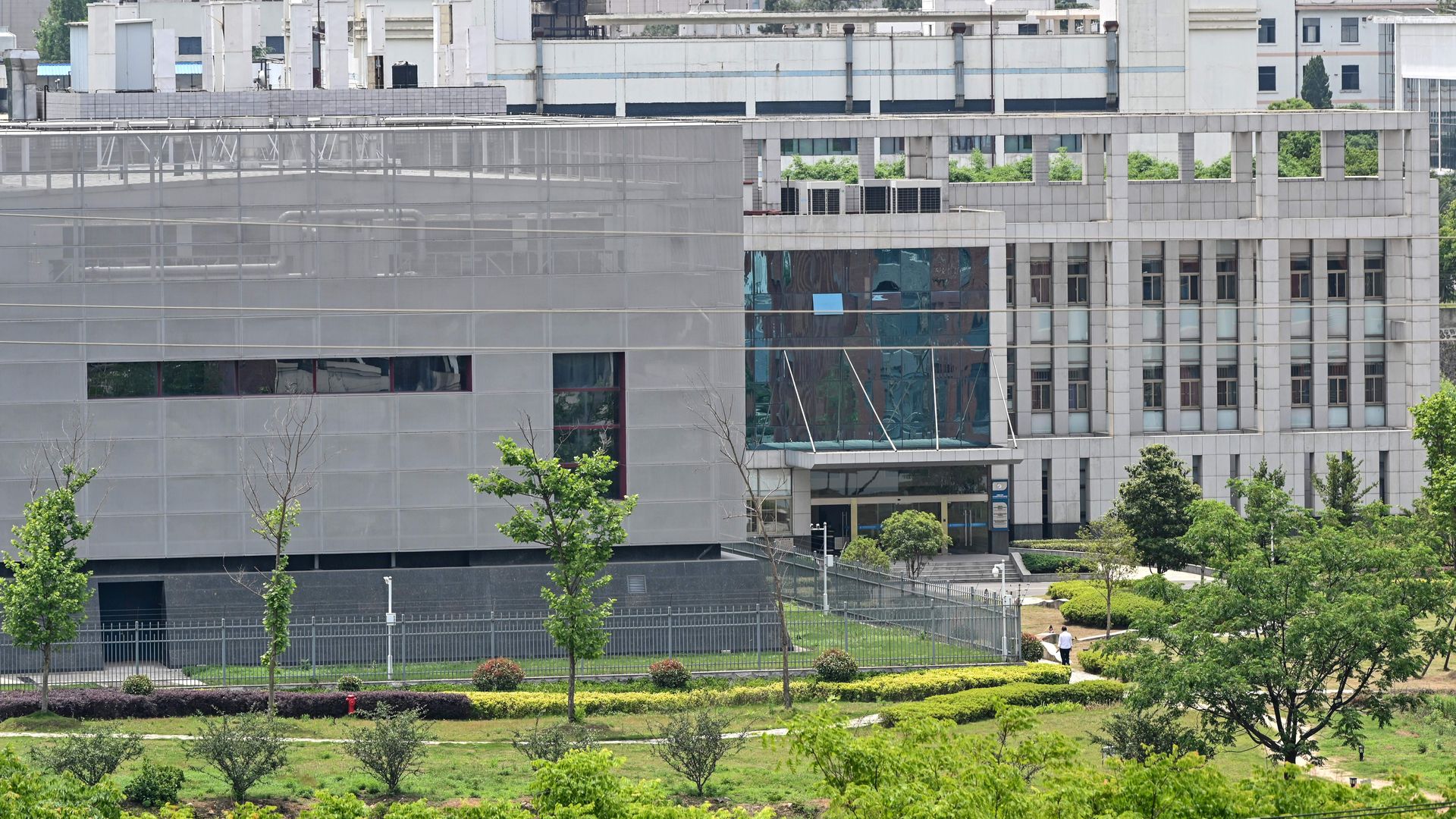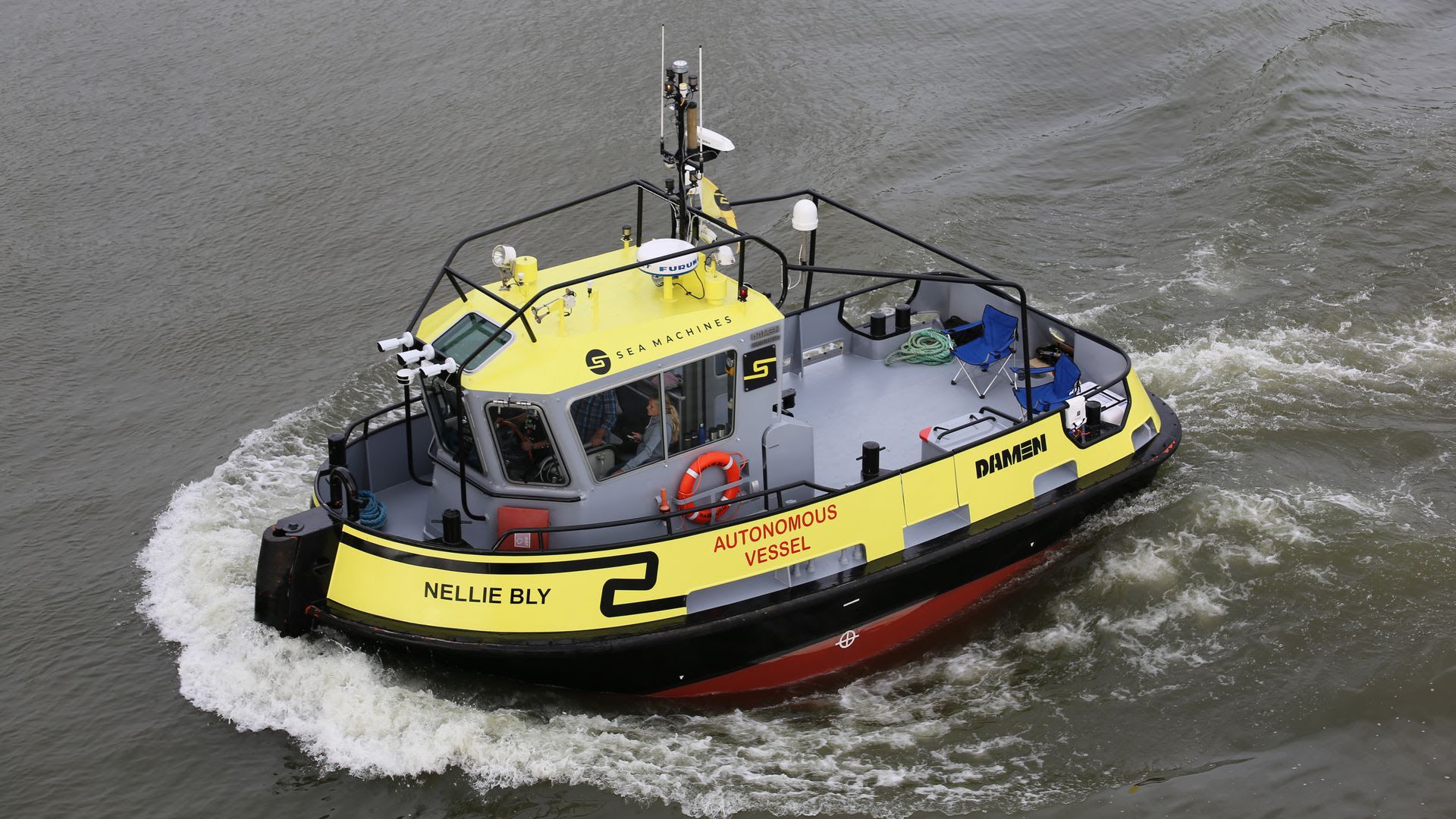| | | | | | | Presented By Uber | | | | Axios Future | | By Bryan Walsh ·Oct 13, 2021 | | Welcome to Axios Future, which was almost consigned to the further future by an untimely content management system error. If you haven't subscribed, now is the time. 🚨 Join Axios' Margaret Talev and me on Oct. 15 at 12:30pm ET for a conversation on AI and defense with Doug Philippone of Palantir Technologies and Sen. Mark Kelly. Register here. Today's Smart Brevity count: 1,633 words or about 6 minutes. | | | | | | 1 big thing: The future will depend on letting people move |  | | | Illustration: Aïda Amer/Axios | | | | The best — and perhaps only — way to respond to huge changes in the climate and global demography may be to facilitate mass migration. Why it matters: Migration in the future will be subject to powerful push and pull factors — the push of climate change and the pull of rich and aging countries in the West and East Asia that will desperately need younger workers from abroad. - But a big post-COVID migration wave will need to overcome substantial political barriers.
What's happening: In his new book "Move: The Forces Uprooting Us," political geographer Parag Khanna makes the case that the world is poised to enter a new era of mass migration in response to major environmental, economic and political changes — and this will be a largely positive change. - That may come as a surprise. International migration largely shut down during COVID-19, as countries turned to border controls to slow the advance of the virus, while past migration waves often seemed to lead to a right-wing backlash in the U.S. and Europe.
- But "migration is a major part of the 100,000-year history of humankind, and the idea that it will be permanently switched off because of the pandemic is preposterous," Khanna tells Axios.
- "All the forces driving human migration are in hyperdrive."
Between the lines: The single biggest factor is that whatever they might feel politically about immigration, most rich countries will require large numbers of workers to keep their economies going in the face of population slowdown and decline. - Germany, the richest nation in Europe, could see its population decline from 83 million in 2017 to 60 million or less by the end of the century, with a far higher proportion of elderly citizens beyond working age.
- Over the same time period, Nigeria's population could at least more than double to 400 million people, many of them the kind of young workers rich nations will need.
- "The gap between old and young people within countries and across them is worse than ever, and it's only going to get more acute," Khanna says. "One by one, countries are waking up to the reality that they need young people to pay taxes and take care of the old people."
Zoom in: The U.K. is an early example of what can happen to a rich country if it disrupts the importation of labor. Thanks in part to Brexit, Britain is experiencing a labor shortfall of nearly 1 million workers. Context: At the same time, many of the countries and regions that have a surplus of people will also come under increasing pressure from climate change, while many of the areas that will remain more livable in a hotter future — what Khanna calls "climate oases" — are comparatively empty. - Within the U.S., heavily populated places like the desert Southwest or wildfire-prone parts of California will become increasingly inhospitable even as colder, depopulating areas like the Great Lakes are poised to better withstand climate change.
The big picture: Put it all together, and the future seems to call for what Khanna terms "cosmopolitan utilitarianism" — a massive redistribution of the global population to the places that get the most out of and offer the most safety to the most people. Read the rest. |     | | | | | | 2. WHO names new advisory group on COVID origins |  | | | The P4 lab of the Wuhan Institute of Virology in Wuhan, China. Photo: Hector Retamal/AFP via Getty Images | | | | The World Health Organization on Wednesday named 26 scientists to a new advisory board that will study the origins of the novel coronavirus, SARS-CoV-2. Why it matters: Without a shift in attitude from Beijing, the new panel isn't likely to succeed in determining how this pandemic began. But it should be in a position to create a clearer picture of how to identify where new diseases like COVID-19 come from. - The scientists were vetted for conflicts of interest and have more expertise on laboratory biorisks, which can help to study one hypothesis that the virus leaked from a lab.
Driving the news: The new panel includes an American scientist and a Chinese researcher — the two countries at the heart of the dispute over COVID's origins — as well as the head of a Swiss biosafety center, which sends a signal the WHO will consider the possibility of a lab leak alongside theories about zoonotic spillover. - Flashback: The original — and now-disbanded — WHO investigative team came under criticism for dismissing a lab leak as "extremely unlikely" in its report published earlier this year.
Details: The new group will assess recent studies on possible animal reservoirs of the virus and advise the WHO on potential future field research that may be needed — including looking at labs where the first human infections were recorded in Wuhan, China. - Yes, but: Such fieldwork would require Beijing's permission, and "this new group can do all the fancy footwork it wants, but China's not going to cooperate," David Fidler, a senior fellow for global health at the Council on Foreign Relations, told the New York Times.
Read the rest. |     | | | | | | 3. Maiden voyage of the first long-haul automated tugboat |  | | | The Nellie Bly, a standard 36-foot tugboat that's been equipped to operate autonomously. Photo: Arie Boer/Sea Machines Robotics | | | | The Nellie Bly is currently about three-quarters of the way through its mission: To become the first autonomously operated tugboat to complete a long-haul run, Axios' Jennifer A Kingson writes. Why it matters: While many tugs are already using autonomous technology for short ship-to-shore runs, it would be much cheaper and easier for long-haul vessels — like oil tankers, container ships and ocean-floor survey boats — to use autonomous tugs as their scouts. Driving the news: A Boston-based company called Sea Machines Robotics — a pioneer in autonomous tug technology — has outfitted a 36-foot tugboat called the Nellie Bly with the self-driving equipment it needs to circumnavigate Denmark, a voyage of more than 1,000 nautical miles (about 1,150 regular miles). - The Nellie Bly left on Sept. 30 and is expected to arrive at its destination on Oct. 16. (Fans can follow its progress on a dashboard that includes a livestream when the boat is in motion.)
- A normal tugboat would have a rotation of people with hands on the wheel at all times. The Nellie Bly has only two people on board — for "safety and redundancy" — while a team from a control room in Boston keeps the boat on course.
- So far, "we've been able to operate 90% autonomously," Amelia Smith, a spokesperson for Sea Machines Robotics, tells Axios. "There've been periods of time when there have been people involved [in controlling the vessel], and that's OK."
The big picture: The ability to rely on computer-run tugs for long-haul sea voyages is "going to make the industry more productive" and "put a lot more vessels on water," Michael G. Johnson, CEO of Sea Machines Robotics, tells Axios. Read the rest. |     | | | | | | A message from Uber | | Decide to ride with Uber | | |  | | | | There is no excuse for drinking and driving. Uber has teamed up with MADD and Anheuser-Busch in a first-of-its-kind coalition to raise awareness and ultimately shift consumer behavior by encouraging consumers to plan ahead. Learn more about the partnership. | | | | | | 4. The 2050 clean-tech market |  World Energy Outlook 2021 report; Chart: Kavya Beheraj/Axios Beyond dire warnings about future carbon emissions, a new report from the International Energy Agency delves into what could be a huge economic opportunity for clean tech, Ben Geman writes. The big picture: It estimates the future market size for a subset of key technologies under two scenarios — nations' existing and announced policies versus an energy system consistent with holding warming to 1.5°C. - In that net-zero emissions pathway, the market for five clean technologies rises to well over $1 trillion annually by 2050.
What they're saying: "This is comparable in size to the current global oil market. This creates enormous prospects for companies that are well-positioned along an expanding set of global supply chains," IEA said. |     | | | | | | 5. Worthy of your time | | The mysterious case of the COVID-19 lab-leak theory (Carolyn Kormann — New Yorker) - An in-depth investigation into the origins of the coronavirus that also demonstrates how far the lab-leak hypothesis has come in just a few months.
New Bond can't take on Beijing's supervillains (James Crabtree — Foreign Policy) - A review of "No Time to Die" that explains why James Bond fights fictional terror groups. (Hint: It's not MI6 policy — it's overseas box office.)
The rise of the robo-voices (Ellen Gamerman — Wall Street Journal) - No, it's not a "Transformers" sequel — it's a story about AI tech that can generate dubbing in the voice of the original actor.
What sea level rise will do to famous American sites, visualized (Aliya Uteuova — The Guardian) - From Kennedy Space Center to the Santa Monica Pier, visions of a warmer and wetter future.
|     | | | | | | 6. 1 sports thing: The (slightly) funner future of baseball | | Credit: 20th Century Fox To combat increasingly lengthy and frankly boring games, baseball is experimenting with dramatic rule changes. The big picture: Nothing says October like baseball playoffs — and baseball worrying about declining fan interest. But changing the rulebook may not be enough to save the sport's future. What's happening: In a fascinating piece for Bloomberg, the reporter Ira Boudway visited the Atlantic League, an independent minor league that has come to serve as an experimental lab for Major League Baseball. - Among the rule changes that are being tried out in the Atlantic League are an automated ball strike system (relayed to the human home plate umpire via an iPhone), bigger bases that are easier to reach (making stolen bases easier), and moving the pitcher's mound back a foot.
By the numbers: Desperate times call for desperate measures, and by many counts, baseball is in trouble. - Over the past 50 years, the average length of an MLB game has risen from 2.5 hours to 3 hours and 11 minutes.
- The number of balls in play — otherwise known as actual game action — has fallen, hits are at a historic low, and strikeouts are at an all-time high.
- Average attendance has been falling since 2007, youth participation is stagnant, and TV ratings are weak.
What they're saying: "You can't argue and beat a robot," said Frank Viola, a former MLB great and a pitching coach for the High Point Rockers, on automated umps. What to watch... whether MLB's attempts to adjust the rules in the majors are foiled by looming labor troubles. The bottom line: Hopefully the rules changes can fix whatever happened in that Red Sox-Rays game. |     | | | | | | A message from Uber | | Decide to ride with Uber | | |  | | | | There is no excuse for drinking and driving. Uber has teamed up with MADD and Anheuser-Busch in a first-of-its-kind coalition to raise awareness and ultimately shift consumer behavior by encouraging consumers to plan ahead. Learn more about the partnership. | | |  | | It'll help you deliver employee communications more effectively. | | | | | | Axios thanks our partners for supporting our newsletters. If you're interested in advertising, learn more here.
Sponsorship has no influence on editorial content. Axios, 3100 Clarendon Blvd, Suite 1300, Arlington VA 22201 | | | You received this email because you signed up for newsletters from Axios.
Change your preferences or unsubscribe here. | | | Was this email forwarded to you?
Sign up now to get Axios in your inbox. | | | | Follow Axios on social media:    | | | | | |










No comments:
Post a Comment